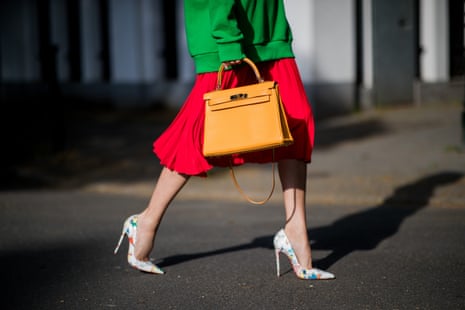08/02/2023 Are brands protected in the metaverse? Hermès and NFT artist spar in US court
Luxury retailer and creator of Birkin bag says Mason Rothschild’s MetaBirkin project has simply ripped it off and reaped the profits

Pictures of 100 Birkin bags covered in shaggy, multi-colored fur have become the focus of a court dispute that will decide how digital artists can depict commercial activities in their art and cast new light on whether brands are protected in the metaverse.
In the case, being heard this week in a New York federal courtroom, the luxury handbag makerHermèsis challenging an artist who sells the futuristic digital works known as NFTs or non-fungible tokens.
Artist and entrepreneur Mason Rothschildcreated imagesof the astonishingly expensive Hermès handbag, the Birkin, digitally covered the bags in fur and turned the pictures into an “art project”, which he called MetaBirkin. Then he sold editions of the images online for total earnings of more than $1m, according to court records.
Hermès promptly sued, claiming the artist was simply “a digital speculator who is seeking to get rich quick by appropriating” the Hermès brand.
The “Metabirkins brand simply rips off Hermès’s famous Birkin trademark by adding the generic prefix “meta”, read the original complaint filed by Hermès in January last year, noting that the “meta” in the name refers to the digital metaverse now being pumped by technology innovators as the next big thing in tech profit-making.
Allow Instagram content?
This article includes content provided byInstagram. We ask for your permission before anything is loaded, as they may be using cookies and other technologies. To view this content,click 'Allow and continue'.
Rothschild, whose real name is Sonny Estival, countered that he has a first amendment right to depict the hard-to-buy, French handbags in his artwork, just as Andy Warhol portrayed a giant Campbell’s soup cans in his famous pop culture silk screens.
“I’m not creating or selling fake Birkin bags. I’m creating art works that depict imaginary, fur-covered Birkin bags,” said Rothschild in a letter to the community after the case was filed. “The fact that I sell the art using NFTs doesn’t change the fact that it’s art.”
Many in the fashion industry have expressed interest in getting into the metaverse, where brands might make money selling digital clothing and accessories that can be worn and traded by electronic avatars.
“It will be a very meaningful case for the fashion industry,” said Michelle Cooke, a partner at the law firm Arentfox Schiff LLP, who advises brands on these types of trademark issues, but was not involved in this case.
“Their ability to control their brands in these digital spaces as much as they do in the real world will have significant implications about how much money they put into these new environments and how they enforce and protect their rights,” she said.
But, Cooke said, the case will, conversely, have big implications for a new generation of digital artists, in deciding how they can depict commercial activities in their art.
“We have a new wave of digital artists coming into existence and the benefit of an NFT is that it allows them to track and monetize their art in ways that they weren’t able to do before,” said Cooke, adding there may need to be new lines drawn as to how artists can pull from the commercial world to make an artistic statement. “So there’s tension.”
One hurdle that Hermès will have to overcome in the case is the fact that US trademark law requires brands to register their trademarks for each specific type of use, so digital sales might require a separate registration.
In the end, Cooke said the decision might come down to whether the jury believes Rothschild did the MetaBirkin project as an artistic project “or was it a money-making venture that he cast as an artistic project when he got into trouble”.
But she said, no matter the conclusion, the case was of such importance that it was likely to be a subject of argument for years to come.
“I will be shocked and amazed if it isn’t appealed,” she said.
I hope you appreciated this article. Before you move on, I was hoping you would consider taking the step of supporting the Guardian’s journalism.
From Elon Musk to Rupert Murdoch, a small number of billionaire owners have a powerful hold on so much of the information that reaches the public about what’s happening in the world. The Guardian is different. We have no billionaire owner or shareholders to consider. Our journalism is produced to serve the public interest –not profit motives.
And we avoid the trap that befalls much US media – the tendency, born of a desire to please all sides, to engage in false equivalence in the name of neutrality. While fairness guides everything we do, we know there is a right and a wrong position in the fight against racism and for reproductive justice. When we report on issues like the climate crisis, we’re not afraid to name who is responsible. And as a global news organization, we’re able to provide a fresh, outsider perspective on US politics – one so often missing from the insular American media bubble.
Around the world, readers can access the Guardian’s paywall-free journalism because of our unique reader-supported model. That’s because of people like you. Our readers keep us independent, beholden to no outside influence and accessible to everyone – whether they can afford to pay for news, or not.
 (0)
(0)
 (0)
(0)
